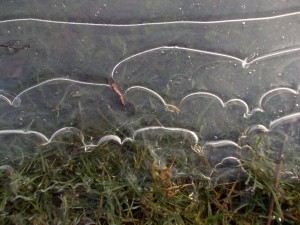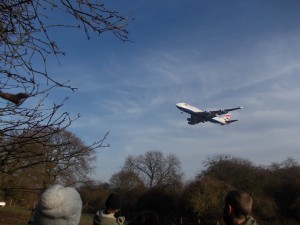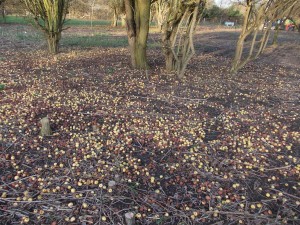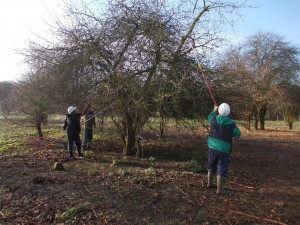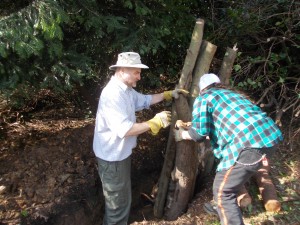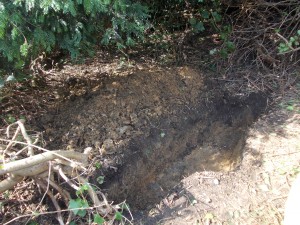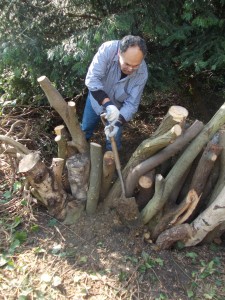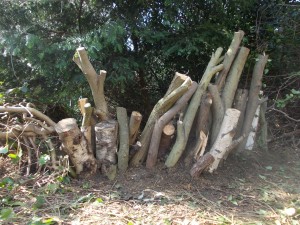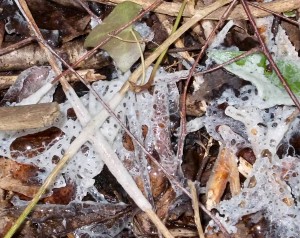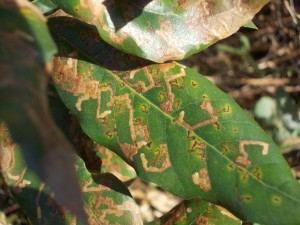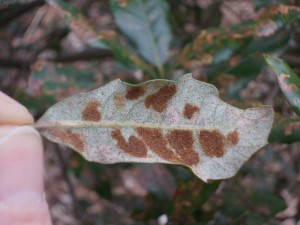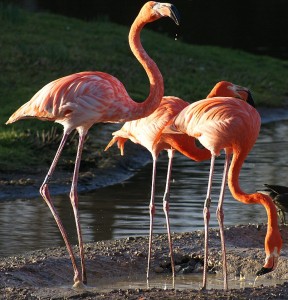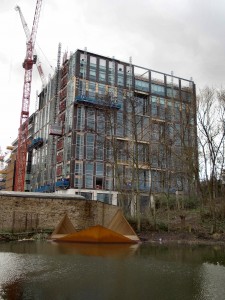Since rain was forecast, we drank up our morning tea quickly, took the tools we needed and wheeled our wheelbarrows off into the reserve. I was given the job of making the boardwalk over the pond safe. It looked all right, but quite a few boards were springy, one or two wobbled, and there were some alarmingly wide gaps where the boards fanned out to get around an angle, so they were tight one side, gappy the other. A mallard duck and drake were snoozing on the other end of the boardwalk. She had laid an egg in the swamp, then moved it behind a tree, but didn’t seem to be sitting on it.
I’m not particularly keen on power tools, but the volunteer officer gave me some flattery about my always doing work aesthetically, so I took a look at the boards. Sure enough, at the angle the boards were all over the place, uneven, and fixed any which way. A chiffchaff sang its endless, two-note ditty: not all warblers have thrilling, nightingale-like songs.
I took the drill and set about pulling out the worst of the boards. Three screws came out; the fourth one was inaccessibly deep and the drill bit just rattled over it. I jemmied up the board, hammered out the offending screw from the back, and levered it off. This was not at all the quiet and restful day in nature I’d had in mind. I lined the board up where I felt it should have gone and screwed it down. The next gap was now wider than before, so it was the next board’s turn. You can guess where this was going. On the fourth board I pulled out six screws, but it still didn’t budge. Scraping around carefully, I spotted another screw, deeply buried in a dirty crevice. I cleaned it off as best I could and luckily it came out. The board was still remarkably solid at both ends: clearly there were still at least two screws holding it down. But where? I took a spare screw and scratched about suspiciously: sure enough, there were two more subtly buried heads. I picked the mud out of the heads, and remarkably they both came up with the drill. Nine screws where three or so should have sufficed, on a misplaced, unchecked board.
Just as I was fixing it down with these dark thoughts, a blackcap burst into song: the first of the year for me.
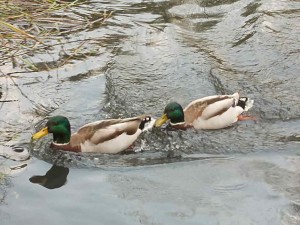
The remaining planks were not too gappy, but were a bit higgledy-piggledy at either end. I pulled up a few more and lined them up to step round the angle as evenly as possible. Then I walked about and put in a line of screws where the boards were springing up and hadn’t been fixed down to the stringer below. The sun was shining and it was really quite warm on the boards. Suddenly there was a splash, and a lot of quacking. A rival drake had landed on the pond! The sleeping pair stood up and quacked for all they were worth. In a moment he had come over, and the pair jumped into the pond. He gave chase. Round and round they went, taking shelter under my feet, their position given away by a steady line of ripples. Then out they burst, flying, splashing down, sometimes with both males grabbing the female. They all flew off, but came back to fight some more a few minutes later. Being a drake in the breeding season is clearly hard work, even when you’re the only resident on a pond.

